2020 has been a year unlike any other in recent history. Businesses have had to react to a changing landscape and either abandon or change their plans to survive and hopefully, eventually thrive. These changes will have a dramatic impact on IT budgets in all industries at all companies of all sizes.
We receive many questions in the fourth quarter regarding establishing an IT budget for next year. While there are certain tax implications that should be reviewed with an accountant, answering the five questions below will allow you to have a more predictable IT cost in 2021.
1. Have you updated your IT Roadmap?
An IT Roadmap is your guide to deploying technology in your organization to support company goals. As stated above, business models and plans have changed, work from here is here to stay and this will require an adjustment to your IT Roadmap. This document is dynamic in that completed items need to come off and new items need to be added. The Roadmap should show what initiatives are being undertaken, when they are planned and how they will be accomplished. An IT Roadmap should also include budget items to be part of a company’s overall IT budget.
2. Where is your current technology in its lifecycle?
A major component of your IT budget is related to the scheduled replacement of hardware and software according to a prescribed lifecycle.
Server hardware and networking equipment has an expected useful life of roughly five years while computers and laptops range between three and four years. As those timeframes are exceeded the likelihood of breaking down increases, the renewal of warranty may not be available or is costly and new equipment introduces new features as well as more robust resources.
Microsoft has an expected lifecycle for its products of ten years. In the first five there is mainstream support and the second five years is extended support. Its products receive updates and patches to fix bugs and security issues as well as introduce minor feature upgrades. 2020 saw the end of Server 2008, Windows 7, Office 2010, Exchange and SharePoint 2010 and Small Business Server 2011 in terms of extended support. Continuing to use those products introduces security risk and can limit productivity of staff.
Applications Software goes through a regular lifecycle of versions which may also impact server and database software. Updates and upgrades need to be budgeted for regarding licensing, hardware, operating and database software replacement and professional services. Application software providers provide advance guidance on updates and upgrades of future versions and should be reviewed annually.
3. Are you expecting to grow or transform the business in 2021?
IT budgets are comprised of Run, Grow and Transform components. The above lifecycle budget items are a subset of the Run component. Organizations that are planning to grow by adding products or geographic coverage or capability, will need to allocate adequate resources to address additional application software licensing, user hardware or server resources for applications or data storage. Organizations which are transforming the way they do business will be reviewing new technology options for new capabilities, process re-engineering or research and development. This might include reviewing cloud vs. premise options for applications or prototyping/modelling software applications.
4. How much more are you expecting to spend on the cloud in 2021?
Cloud computing continues to be one of the fastest growing sectors of IT. Software as a Service (SaaS), Microsoft 365, Microsoft Azure, Google Cloud and Amazon Web Services are all upending the traditional premise-based hardware/software model. The change from capital expenses to operating expenses is having a profound effect on business financial positions, cash-flow as well as the speed with which new technologies can be adopted.
5. How much more are you going to be spending on security in 2021?
We are in the most challenging time of IT security. Bad actors are continuing to expand their attacks as businesses’ attack surfaces expand with cloud-based applications, remote workers and falling behind on the IT lifecycle. Security initiatives to protect data; client, employee and intellectual property and meet government or industry compliance requirements will increase budget dollars related to security. Advanced firewalls, anti-malware, encryption technologies, mobile device management and employee training are all part of a layering approach to keep data and resources safe. An annual Security Risk Assessment (SRA) will reveal the current status of the risk associated with technology to business operations and vulnerability scanning will provide the top three to five priorities to be addressed.
Business continuity plans will include expanding budgets for data backup and cyber and business interruption insurance.
As reported in the 2020 Deloitte Global Technology Leadership Study concerning IT budgeting, organizations are spending roughly 4.25% of revenues on IT operations. By answering the above five questions, organizations will have a head start on implementing a budget framework to increase the predictability of IT costs in 2021.


